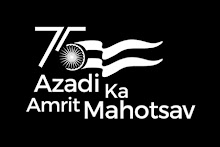India recorded the highest domestic passenger growth this July at over 20%, followed by Brazil at about 18%, though the growth was slower for international air traffic. “Brazil and India recorded the highest growth rates of 17.8% and 20.6% respectively. Both were stronger than June's performance,” the International Air Transport Association (IATA) announced in its traffic results which showed that the global passenger travel growth was up 5.9% over the same period last year. However, in most other countries, domestic air travel demand remained “much more sluggish than that for international travel”, the latest IATA figures showed. American domestic market, which represents half the world market, grew 2.1% compared to July 2010, while China, with the second biggest domestic market (18% of the world), “slowed abruptly” to just a 5.1% rise.
2.9.11
August Car sales skid

High interest rates and steep petrol prices have marred the growth story of the car industry. In August, the sales growth lost the steam for the second consecutive month, with top three carmakers — Maruti Suzuki, Hyundai and Tata — witnessing decline in volumes. Maruti Suzuki’s sales were down 17% despite the launch of new Swift and the company has already said that it expects sales growth to be in the “small single digit” percentage point this fiscal. Hyundai too had a second straight month of decline in the domestic market as its volumes slipped 7% to 26,677 units against 28,601 units in the same month last year. Tata Motors witnessed the steepest fall, with numbers crashing by 33%. The company sold 16,829 units in the month against 25,212 units in the same month last year. Alarmingly, the Nano could not do much in terms of volumes as the model could manage sales of only 1,202 units, 85% lower compared to August last year. The month was equally tough for Ford Motors that saw another month of decline in domestic sales. Ford's volumes were down 7% at 7,382 units against 7,925 units in August last year. This happened despite the addition of the Fiesta sedan to its portfolio. Analysts said that the car industry continues to face a challenging environment at this moment with high interest rates and fuel prices acting as big dampeners. Also, the choppy markets and high inflation are acting as negative factors. Companies are banking on new models and the forthcoming festive season, where demand usually peaks, for realizing growth. Companies are offering heavy discounts to push sales. Honda’s sales grew 25% to 6,907 units, after it reduced the price of City sedan by Rs 66,000 and Jazz hatchback by Rs 1.6 lakh. The City model sold 5,819 units in August, showing a 35% growth. But while the big ones suffered, others like Toyota, Volkswagen and Mahindra managed healthy growth. Toyota, that has added the Etios sedan and the Liva hatchback to its portfolio, said sales in the month were up 84% at 11,693 units against 6,361 units in August last year. For Mahindra, the growth was 13.5% at 15,664 units, while Volkswagen’s sales rose 95% to 6901 units.
Of Farm produce wasted
Ever wondered how much food — grains, fruits and vegetables — are wasted? A recent study undertaken by Central Institute of Post-Harvest Engineering and Technology (CIPHET), a governmentrun institute, has estimated that it could be of the order of Rs 44,000 crore. But that was at 2009 prices. With food prices rising at double-digit rates for the past two years, officials now put that number at close to Rs 50,000 crore annually, if not more. So, losses from farm sector would amount to just around 7% of the total produce, which was valued at Rs 7 lakh crore in the GDP estimates for 2010-11. Officials are trying to look at the brighter side of the story — saying wastage is much lower than the oft-stated 40% level. Although cereals, such as wheat and rice, pulses and oil seeds accounted for around twothirds of the wastage, the loss in case of fruits and vegetables was the highest at up to 18% of the total produce. If the government chooses to spend more on creation of storage and processing facilities —something it has been talking about for years — this level could come down significantly. In recent months, it is repeated price shocks in case of fruits and vegetables that has upset housewives’ monthly calculations. Of the Rs 50,000 crore lost, around Rs 33,000 crore was accounted for by cereals, pulses and oil seeds. In case of cereals and pulses, losses were estimated at 4-6%, while wastage in case of oilseeds went as high as 10%. In case of milk the losses were estimated at 0.8%, while for meat and poultry it was 2.3% and 3.7%, respectively. The losses take place in almost all stages of farming but the study looked at harvesting, collection, grading, cleaning, packaging, transportation and storage. If cultivation was also included the loss would figure would be much higher. While the figure is appalling, the government officials said that availability of better technology and their adoption has brought about a reduction in losses.
Justice Sen quits
Humiliated by the adoption of an impeachment motion in Rajya Sabha and facing another in the lower house, Justice Soumitra Sen of the Calcutta High Court has sent President Pratibha Patil his resignation letter. But he insisted that he wasn’t guilty of the corruption charges levelled against him and would believe so throughout his life. Sen was accused of misappropriating Rs 33 lakh as a receiver in 1983. Had he been impeached, Sen’s would have been the first such case in India. Earlier impeachment moves have fallen through because the judges quit or the House vote fell short of numbers. In another letter to the Speaker, Sen submitted the defence he would have put up in the Lok Sabha.
GST update
It’s going to be a tough September for finance departments across the country with finance ministers from around 20 states — despite all of them not agreeing with the proposed Goods and Services Tax (GST) rollout — going to Europe to study the indirect tax regime. On September 7, the 20-odd finance ministers — the number was initially limited to 15 — would fly to Paris and Spain to study how GST works. They would then visit Brussels (Belgium) and Luxembourg, where the central focus is going to be on dispute resolution. From Bihar deputy chief minister Sushil Kumar Modi, who in his role as the head of the empowered committee is trying to push its implementation from April, to Raghavji, Madhya Pradesh finance minister and the most vocal critic of the scheme, the entire spectrum of state finance ministers will go to study the tax practice in Europe. Sources said that all states were invited to be on board the flight but around 20 have confirmed so far. In several states such as Uttarakhand, Assam, Meghalaya and Manipur, the chief ministers are in-charge of the finance portfolio and have deputed others to go for the study tour. Although progress has been a little slow on getting everyone on board, the sources said that speed is expected to pick up in the coming weeks. Three sub-groups on legislation, Central GST and State GST have been asked to submit their reports at the earliest. Modi is also due to meet Yashwant Sinha, chairman of the standing committee on finance that is studying the constitutional amendment Bill on GST to request for an early report.
Food inflation hits double digits
Food inflation has hit double digits in mid-August on the back of costlier vegetables, especially onion, fruits and protein-based items, prompting finance minister Pranab Mukherjee to admit the trend was disturbing. Official data released on Thursday showed food inflation, as measured by the wholesale price index, stood at 10.05% in the week ending August 20 – up from the previous week’s 9.80%. Food inflation had last hit double digits in March. Food prices have remained volatile in recent weeks after displaying easing signs for a few weeks. Onion prices are again proving to be a problem. The latest data shows onion prices shot up 57.01% year-on-year, fruits 21.58%; egg, meat and fish 12.62%; vegetables 15.78% and potatoes 13.31%. Experts say heavy rains in the onion growing areas in Maharashtra might have hurt supplies, while the spurt in vegetable prices was attributed to seasonal factors.
Peugeot to set up shop in Gujarat

French carmaker Peugeot has announced that it will invest Rs 4,000-crore to set up an auto manufacturing plant in Sanand, next to Tata Nano factory and Ford India’s proposed car unit. “Today, a new lion is born in Gujarat,” said Pillippe Varin, chairman of Peugeot Citroen Automobiles while referring to the company’s logo at a ceremony to sign an agreement with the state government. Varin said the company preferred Sanand over Tamil Nadu because Gujarat offers a proactive business-friendly environment, excellent infrastructure and is geographically well-positioned to cater to passenger car markets across India. The Gujarat Industrial Development Corporation (GIDC) has set aside 584 acres of prime land in Sanand for Peugeot. It has also set aside another 25 acres for ancillary industries to support the unit. The facility will provide direct employment to 5,000 and indirect employment to 25,000 persons. To initially manufacture 1.65 lakh vehicles, the manufacturing unit will start operating in 2014, and the company envisages export of 25 per cent of its vehicles. Additionally, an engine and gearbox plant using latest power train technologies will help constitute a fullfledged modern industrial automotive facility. It proposes to expand its capacity to 3.40 lakh vehicles, 3 lakh engines and 3 lakh gear boxes by 2020, it was announced. “Peugeot’s arrival after Nano and Ford suggests Gujarat has emerged as a global auto hub. More car manufacturing units on their way,” CM Narendra Modi said, adding, “The auto part supply facilities to be developed for them will make Gujarat as one of world’s biggest auto part suppliers.”
Subscribe to:
Comments (Atom)



